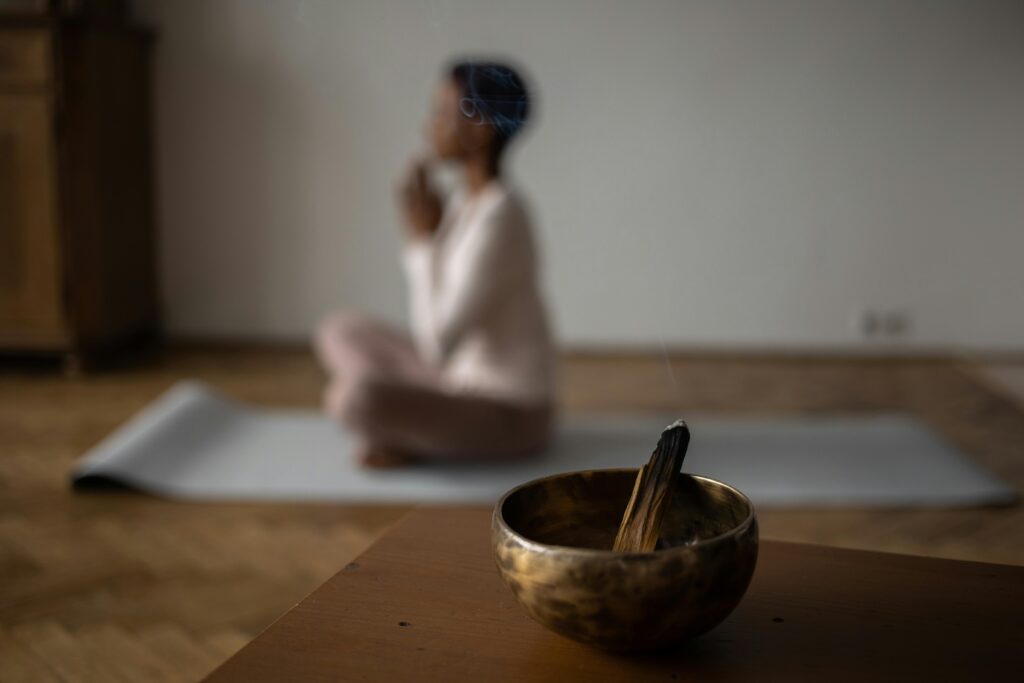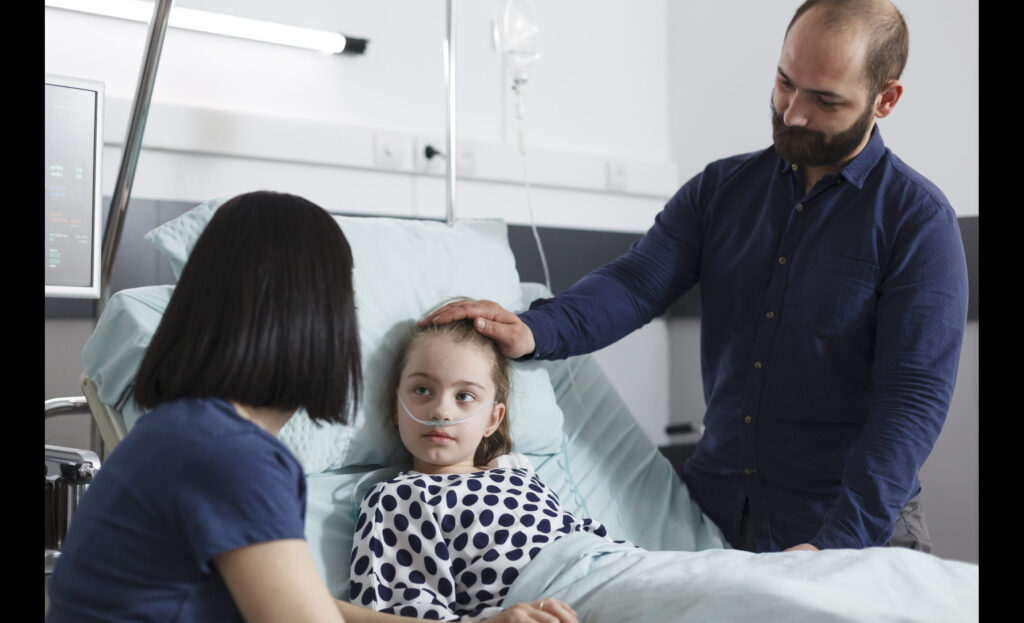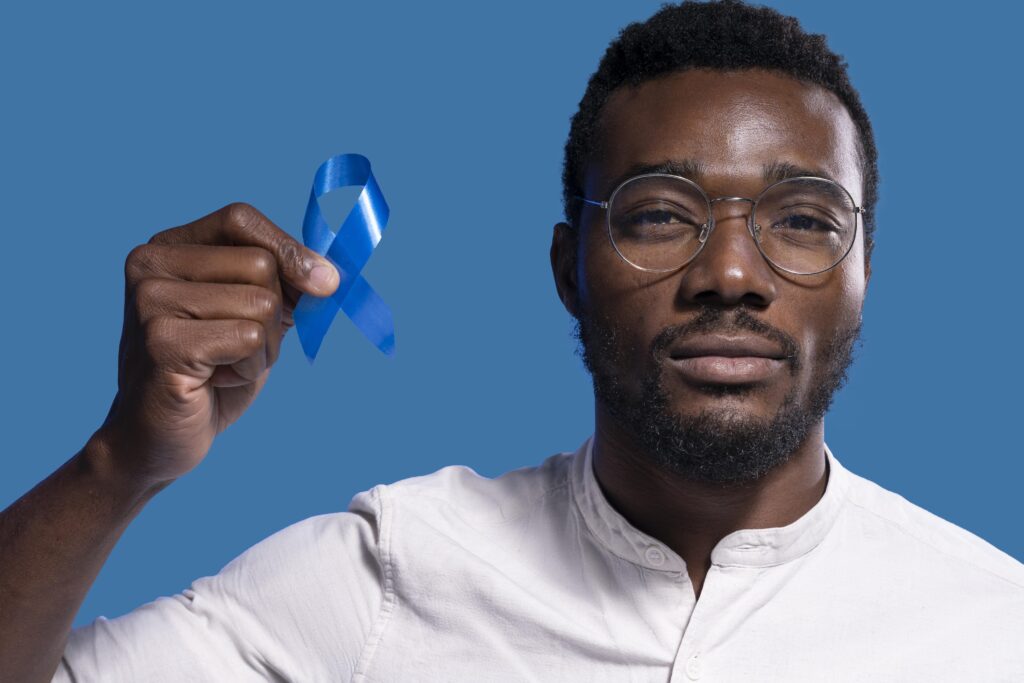Caring for the Care Giver

Recognizing the Role of Caregivers Caregivers play a crucial yet often overlooked role in supporting patients throughout their medical journeys. With nearly five decades of experience as a radiation therapist, I have witnessed firsthand the varying degrees of support that patients receive. Some are fortunate to have a strong network around them, while others face the challenges of treatment alone. This isolation can place significant emotional and practical stress on those who care for them. A previous blog discussed the topic of assisting others. The Emotional Toll on Caregivers Despite maintaining professionalism and compassion, caregivers frequently find themselves personally impacted by their patients’ experiences. Radiation therapists often form strong bonds with patients because treatments are given daily for weeks. These repeated interactions allow for deeper connections, often requiring therapists to provide emotional support that goes beyond their clinical responsibilities. The Power of Listening One of the most valuable ways caregivers can support patients is by listening actively. For example, I recall a patient who had just retired and was diagnosed with breast cancer. Listening to her and encouraging her showed how important it is to reassure patients they’re not alone. Such moments reinforce the importance of empathy and attentive care, reminding both patients and caregivers of the strength found in connection.
Energy healing and its power

As a former radiation therapist, while working with patients, my intuition often nudged me toward a fact that was rarely discussed. My gut feeling told me that we are not just this physical body, but there are other ways to heal the body. We not only have the physical body that we can see and touch, but also another body—our energy body—within our physical body. The only difference is that the physical body has blood and other bodily fluids flowing through its channels, while the energy body has a flow of energy. We are surrounded by and connected to an energetic system that flows through us, and this energy plays a significant role in our overall well-being. While working in hospitals, I often felt something was missing in completing the patient’s care—energy healing. It could complement modern medicine and offer a more holistic approach to healing. Understanding how energy healing works on the subtle body and its channels can give us insight into how this type of healing can prevent illnesses and diseases from arising. Why not address the physical body and, at the same time, heal the energies responsible for maintaining harmony throughout the whole system? Just as we have veins and arteries, we also have channels that are not visible to the medical team because they are considered non-physical. These channels make up the subtle body, which holds our emotions, mental state, and spiritual states. The subtle body operates on a deeper, more energetic level. It contains multiple layers that hold these emotional, mental, and spiritual states and is responsible for processing the energies that influence our well-being. At first, I didn’t understand how the subtle body worked or how important it would be in my healing practice. We have over 72,000 channels called Nadis. The Prana or Qi flows through these pathways, maintaining the balance necessary to stay healthy physically and emotionally. When these pathways become blocked by emotions or illness, the result is often a physical manifestation of disease. Most imbalances in these channels don’t happen overnight. Emotions have a way of getting stored in these channels, and if healing doesn’t occur, these imbalances eventually show up as physical symptoms. Over the course of my 25 years of working with patients, I heard similar stories of emotional turmoil and unresolved life challenges that had put significant stress on their bodies. A life without its ups and downs would seem like a life never truly lived. We all go through challenging experiences—situations that are difficult to digest or impossible to accept. Ultimately, we have no choice but to face them. Our bodies carry the toll of our emotions, and we, as humans, operate from our emotional state. This raised a question in my mind: What can we do to prevent illness? Is there a way to stay truly healthy, avoiding disease altogether? The first time I received energy healing from a friend; I felt an immense sense of physical relaxation. Over time, I realized the profound benefits of this type of healing. My mind became calmer, and I felt more at peace. Little did I know, this energy healing—whether my friend was touching specific points on my body or simply hovering her hands over them—was balancing my Prana or Qi. She was the conduit for transferring the necessary healing energy into my subtle body, unblocking and restoring the essential pathways. As a result of her ability and my body being ready to receive, my physical and emotional body (subtle body) began to show signs of strength and improvement. Emotionally, I became more resilient and gained clarity about what I wanted from life. I was able to set goals and achieve them, which boosted my confidence. The depth of this therapy reached deep into my cells, promoting healthy cell regeneration. I began experiencing what my intuition had hinted at months earlier. I was able to keep illness at bay, boost my immune system, reduce stress, and manage my anxiety. I was finally seeing the root causes of my disease in my habits and behaviors. I began feeling happier, more hopeful, and no longer burdened by the sense of being stuck. My negative thought patterns started to fade away. Energy healing changed my life. To the present time, I have been illness-free for over twenty years! I became more mindful of my body, mind, and breath. This new awareness of my energy system has made me more attuned to my health. As soon as something feels off, I notice it right away and can address it through breathwork, yoga, or regular energy healing sessions. Energy healing is a powerful tool available to us today. Why not use it to restore balance to our energy as soon as possible, allowing us to live in a healthier body? By investing in yourself, you are not only reducing the stress in your system but also nurturing the deeper layers of your being. Nameste, Shab
Clouds of Doubt

The day I heard the words ‘poor prognosis,’ my world crumbled. A dark cloud started following me everywhere. I felt alone in the entire world with this cloud over my head. No one else could see it, but I could. How is it possible? I see this thick cloud with no light in it, and life is going on like nothing has happened! It felt heavy, and I could not breathe. There was no oxygen, or at least not where I was standing. Every thought and every breath felt heavy, and hope seemed so far out of reach. Before I knew it, I was walking under this cloud, and my journey of treatments and endless doctor appointments had begun. I realized this storm would not pass quickly. There were days when I felt like staying in bed under the covers until it was all over, but the voice inside me kept nagging me to get up and face the impossible. It kept showing me that this journey was worth fighting for and that I should not give up. Nothing was clear in my mind; chemo drugs didn’t help either, creating their own cloud in my head. Not only did I have the thick overhead cloud, but I also had a smaller one in my head that made my vision hazy just enough to navigate through the fog of the day. I kept up with my prayers to keep me grounded and closer to my spiritual roots. The days when I was floating, trusting that this, too, shall pass, became my mantra. The solitude was loud, and no matter how many people visited or called to hear my voice on the phone, I couldn’t feel the connection. After all, they weren’t under my cloud. They were living their lives, and they didn’t know what I was going through. Yes, I felt sad and sorry for myself. Despite all the inner nagging and negative thoughts, my feet drove me to all my treatments. Upset at being in the clinic for hours and not enjoying my movies, I showed up for each one of them. Accompanied by a close friend, she worked while I lay there in my chemo chair, hoping that one day, all this experience would become as blurry as my current vision. Don’t get me wrong; the thought of not existing came to me daily. All the what-ifs had their answers, more or less. Anxiety had become part of the cloud. When it showed up, anxiety was written all over it. Negative thoughts and made-up scenarios were written like a professional screenplay. I was so good at it that I thought I must have missed my calling. I could have written so many fantastic films. Maybe I could have gone to the South of France and participated in the Festival of Cannes! I had the experience of anticipating different events in my life, but nothing came close to the waiting game for a phone call from the doctor. Not only did I have to subject myself to hours of scanning by giant machines and injections, but I also had to wait to hear the results. It didn’t matter how hard I worked to write my new screenplays while waiting; my mind wanted to hear from my doctor. The one phone call that might determine the rest of my journey. “Should I stay or should I go now?” The song kept repeating in my head. I finally dozed off to a sweet dream. Here I am, six months later. The air feels a little lighter. I can breathe better. I looked up, and the thick cloud started to break. The scan showed progress—hope. I was overwhelmed. I realized the light of hope had always been there, quietly waiting, but I couldn’t see it with my blurry vision. The uncertainty had created the darkness of my cloud; the light was always above it, but not visible. Since it seemed that I would stay, I asked myself, “What should I do with the remainder of my cloud?” “Should I focus on the light that’s coming through?” I have the power to see a more powerful light and let go of the cloud for good. The scan had given me the chance to strike again. My body is saying, “I am taking a break. Enjoy it.” We all face storms from time to time. They vary in strength and speed. We all have those moments when we can’t breathe properly. But we can’t forget that hope is always there. We might not see it clearly, but it doesn’t move, despite our foggy minds. Even when we choose not to see it, it is shining on us from afar. After all, the sun isn’t close by, but it still keeps us warm and brightens our day. Nameste, Shab.
A House Full of Open Windows

Have you ever had days when you couldn’t get out of bed or do anything productive? Doesn’t it feel like they last forever? No matter how positively you think or speak to yourself, those days linger, refusing to pass. Six months ago, after a setback in my health, I felt discouraged and unmotivated to pursue anything new. My body was fatigued and defeated. I tried every tool I had learned over the years—techniques that usually lifted my spirits—but nothing seemed to work. The simple truth? I didn’t feel well, period! You see, I am what some would call a “professional student.” Even now, in my sixties, I love learning new skills, reading the latest self-discovery books, and continuously improving myself. I make it a priority to move my body daily, doing my best to keep it healthy. But when my body doesn’t cooperate, I have no choice but to manage my symptoms and wait for time to heal them. Honestly, out of thirty days in a month, I’m lucky if I get one good week. I have learned to call those good days my open windows—windows of opportunity to engage in positive and normal activities for my body and mind. On my not-so-good days, I do my best to count my blessings, using them as a distraction from the negativity that illness can bring. I remind myself how wonderful it is that I can still breathe on my own, walk without assistance, and eat independently. I stay close to my spiritual practices, which keep me grounded. My mantra music (Kirtan) is another way I cleanse my mind of negative thoughts that tend to appear when I’m down. It’s easy to spiral into darkness when pain and fatigue take over—a deep well where no one can see you, not even those closest to you. It feels as though you are underground, unheard, and alone until your body begins to recover, even if just temporarily. Yes, I call them not-so-good days because, in reality, bad days don’t exist. It is only by comparison that we categorize them. I choose to see those days as windows closing. When they shut, I no longer experienced the normalcy of my life. But that doesn’t mean they’re closed forever. They will open again, allowing me to see the light—I just have to be patient with my body. Have you ever looked at a house and wondered why it has so many windows? Even a house needs open windows to let in fresh air and release what no longer serves it. These windows allow light to shine in, bringing hope and renewal. They offer a clear view—perspectives that the house needs to understand its surroundings. One window might open to the main road, where the hustle and bustle of the neighborhood create a lively picture. The back windows may reveal a serene backyard, where calmness resides. Each side window presents a different perspective on life’s unfolding story. Together, all windows are necessary, creating a panoramic view of existence. I am that house—filled with memories, lessons, and wisdom gathered over the years. When I was younger, I had a fresh paint and a stronger foundation. Now, with time, signs of aging have appeared—cracks, rust, and wear. Yet within my walls, I remain resilient, standing tall despite the passage of time, eager to see the world through all my windows. Today, the sun is shining, and my windows are wide open! No aches, no pain. I remind myself that I still have time to learn, to grow, and to welcome new experiences. Good days and not-so-good days will come and go. Windows will open and close according to the laws of the Universe and the path I have chosen. I trust that I will continue managing my symptoms with kindness and patience. After all, this is my only house—with so many windows open to me. I feel blessed to have them: to spend time with my granddaughter, to walk by the ocean and witness life’s marvels, and to share moments with family and friends who mean the world to me. My house and its windows are here to stay, and I plan to open them—one by one—to live a full and meaningful life. Nameste Shab
What Type of Meditation is Best for You?

As you may know, there are various types of meditation to choose from. Among them, guided meditation is one of the most popular and widely practiced techniques. In guided meditation, someone reads a script for you to imagine and follow, helping you create a vivid mental picture. Mindfulness meditation, on the other hand, involves paying attention to your thoughts, and feelings, or simply observing objects around you without judgment. Spiritual meditation varies depending on your spiritual traditions and may include practices like prayers, whirling (as in Sufi traditions), or seeking a deeper connection to a higher power. These are just a few examples of the many meditation techniques available. If you are new to meditation or simply want to quiet your mind, you may wonder: How do I know which type of meditation is best for me? Guided Meditation: A Beginner-Friendly Option Guided meditation is often the easiest technique for beginners. It engages your imagination to calm your body and mind. Although it’s simple to follow, guided meditation is a powerful tool for developing focus. As you visualize scenarios or images, you engage your senses and influence your body’s physical functions. For instance, guided meditation can lower your heart rate, decrease blood pressure, and activate your parasympathetic nervous system—the body’s natural resting and healing state. Exploring the Layers of Your Being It’s important to recognize that you are more than just your physical body. Around your physical body are layers of subtle energy fields, including the Breath body, Emotional body, Intellectual body, and Bliss body. When you meditate, these layers connect, creating a holistic experience. The Breath body, responsible for vital energy and moving energy throughout your system, plays a key role in this connection. Through guided meditation, you may revisit a specific place or moment in your life, transforming negative emotions into positive ones. This shift brings peace and vitality to your entire being. Healing occurs when you release the need to control and allow yourself to open up to new imagery, find solutions, or gain clarity about challenges you face. A Case Study: Meditation as a Healing Tool Guided meditation can extend beyond simple visualization. It can help you process and transform deep-seated emotions tied to past events. Let me share a powerful example: In 2018, I worked with a young client diagnosed with cancer. Her tumor was large and understandably caused significant fear. We began by teaching her how to use her breath to calm her mind and thoughts. Once she was comfortable with this practice, we progressed to visualizing the tumor in her body. Rather than fearing the tumor, she learned to connect with it. Through meditation, she stopped seeing the tumor as an enemy and instead embraced it as part of her body. The meditation sessions focused on calm breathing, communicating with the tumor, and visualizing it shrinking bit by bit. She practiced this daily, both with me and on her own. Over time, her fear of the tumor and of dying diminished significantly. She reclaimed her power, leaving the tumor energetically powerless. While she continued with her conventional treatments, including chemotherapy, she also maintained her meditation practice. After six months, her PET scan revealed that the tumor had shrunk so much it was no longer detectable. Today, she is cancer-free and thriving as an artist in Northern California. She continues to practice meditation and embraces holistic approaches to support her well-being. The Power of Your Mind This story illustrates the immense power of the mind. When you decide to harness this power for your benefit, you unlock your potential and discover just how capable you truly are. Namaste, Shab
Mindfulness Techniques – Using Mindfulness to Manage Stress and Emotions

Last week, we explored stories of resilience and hope, which underscored the importance of staying positive and determined throughout your breast cancer treatment journey. This week, we’ll focus on practical tools to help you manage the stress and emotions that often accompany treatment—specifically, the transformative practice of mindfulness. Mindfulness is the art of being fully present in the moment, and aware of your thoughts, emotions, and surroundings without judgment. It’s not about pushing away negative feelings but about learning to coexist with them in a way that reduces their power over you. Research from the Mayo Clinic has shown that mindfulness can significantly reduce stress, enhance mood, and improve overall well-being. For anyone undergoing the physical and emotional challenges of cancer treatment, mindfulness can serve as a grounding and empowering practice. Benefits of Mindfulness During Treatment Cancer treatment often brings uncertainty and stress, making it easy to feel overwhelmed. Mindfulness can help by providing a sense of control in the midst of chaos. By focusing on the present moment, mindfulness encourages you to take things one step at a time, rather than worrying about what lies ahead. This shift in perspective can reduce anxiety, improve sleep, and even help manage pain. Moreover, mindfulness has been shown to positively impact emotional health by fostering greater self-compassion. Instead of being hard on yourself for moments of vulnerability or fear, mindfulness helps you accept these feelings as part of your journey, allowing you to move through them with kindness and understanding. Simple Mindfulness Practices to Try Deep Breathing ExercisesOne of the easiest ways to practice mindfulness is through deep breathing. Find a quiet, comfortable space and sit in a relaxed position. Close your eyes and take a slow, deep breath in through your nose, hold it for a few seconds, and then exhale slowly through your mouth. Focus on the sensation of your breath as it moves through your body. Repeat this process for a few minutes, allowing your mind to settle and your body to relax. Deep breathing not only calms the mind but also lowers your heart rate and reduces tension in the body. Mindful Meditation Set aside five to ten minutes each day for meditation. Start by sitting quietly and focusing on your breath. You can also use a mantra or affirmation, such as “peace” or “strength,” to anchor your thoughts. It’s natural for your mind to wander—when it does, gently bring your focus back to your breath or mantra. Over time, this practice can help you become more aware of your emotions and thought patterns, making it easier to manage stress and negative feelings. Body Scan MeditationThis technique helps you connect with your body and release physical tension. Lie down in a comfortable position and close your eyes. Starting at your toes, slowly bring your attention to each part of your body, moving upward to your head. Notice any sensations or areas of tension without judgment, and imagine releasing that tension with each exhale. A body scan can be particularly helpful before bed to promote relaxation and restful sleep. Mindful ActivitiesEveryday activities, such as eating, walking, or even folding laundry, can become opportunities for mindfulness. Focus entirely on the activity at hand, paying attention to the sensations, movements, and sounds involved. For example, when eating, savor each bite—notice the flavors, textures, and aromas. These simple practices help bring mindfulness into your daily routine. Accessing Mindfulness Resources Many cancer centers, including MD Anderson, offer mindfulness resources tailored to patients. These may include guided meditation sessions, yoga classes, or support groups focused on incorporating mindfulness into your life. Online platforms and apps like Headspace, Calm, and Insight Timer also provide accessible mindfulness exercises you can practice anytime, anywhere. Making Mindfulness a Habit Integrating mindfulness into your daily routine doesn’t require a significant time commitment. Start small—just a few minutes each day—and gradually increase as you feel comfortable. The key is consistency. Over time, mindfulness can become a natural part of how you navigate life’s challenges, providing you with a steady sense of calm and resilience. As we move into the next month, we’ll focus on the role of your radiation therapist in supporting you throughout your treatment. Building a strong, trusting relationship with your therapist can enhance your overall experience, making your sessions more comfortable and reassuring. Mindfulness, combined with the care of your medical team, creates a powerful foundation for your physical and emotional well-being.
How Childhood Cancer Shatters Families and Shapes Resilience

For over 25 years, I have dedicated my life to being a radiation therapist, witnessing the myriad ways cancer impacts not just patients but their families and communities. Every day in the clinic is a testament to the resilience of those battling cancer and the intricate web of challenges they face. Among the most heart-wrenching experiences is seeing how childhood cancer devastates families, altering their dynamics and straining their emotional and financial well-being. Childhood cancer is not just a medical diagnosis; it’s a seismic event that shakes the very foundations of a family. Parents are thrust into a world of hospital visits, treatment plans, and medical jargon while trying to maintain a semblance of normalcy for their other children. The emotional toll is staggering. Mothers and fathers grapple with feelings of helplessness and fear, siblings feel neglected or develop anxiety, and the child facing cancer endures pain and uncertainty beyond their years. The financial burden of childhood cancer is another critical issue that cannot be overlooked. Reflecting on an article from the New York Times, families often face significant financial strain due to medical expenses, lost income, and additional costs such as travel and accommodations near treatment centers. This financial pressure can lead to difficult choices, such as one parent leaving their job to provide full-time care for their sick child, further compounding the economic impact . In my career, I’ve seen how these pressures manifest in daily life. Families become adept at navigating the labyrinth of insurance forms and medical bills. Still, the constant worry about finances often exacerbates the stress and anxiety associated with the illness. The lack of comprehensive support systems that address both medical and non-medical needs is a glaring gap in our healthcare system, one that we, as a society, must strive to bridge. On a more personal note, I remember a young patient named Emily and her family. Emily was diagnosed with a rare form of leukemia at age six. Her parents, both working full-time, had to take turns staying with her at the hospital, juggling their jobs and caring for Emily’s younger brother. The emotional and financial strain on the family was palpable. Yet, amidst this struggle, their resilience shone through, a testament to the unyielding strength of the human spirit. Emily’s story is not unique. It is a narrative echoed in countless households across the country. As a radiation therapist, I am privileged to witness these stories of courage, but it also underscores the need for a more holistic approach to cancer care—one that acknowledges and supports the emotional, financial, and social challenges families face. As we continue this blog series, I hope to shed light on the multifaceted impact of cancer on patients and their loved ones. Through these reflections, I aim to foster a deeper understanding and, ultimately, advocate for changes that will alleviate the burdens shouldered by so many. In the upcoming entries, I will explore other critical aspects of this journey, including the psychological toll on patients, the role of caregivers, and the broader implications for our healthcare system. By sharing these stories and insights, I aspire to honor the incredible resilience of those I have been privileged to serve and to inspire action towards a more compassionate and comprehensive approach to cancer care.
8 Surprising Strategies for Phone Freedom

Reducing screen time on phones presents a considerable challenge due to their design to captivate attention and stimulate dopamine responses. Acknowledging this difficulty is crucial, as it entails more than mere willpower but rather a complex interaction with technology. Recognizing the desire to spend less time on phones is a positive step, indicating a readiness to change and improve habits. Instead of solely focusing on restriction, it’s beneficial to identify personal motivations or “whys” behind wanting to reduce screen time, such as being more present in relationships or achieving professional goals. Practical strategies like enabling grayscale mode, silencing notifications, or physically distancing oneself from the phone can reduce its allure. These methods disrupt habitual behaviors and diminish the immediate gratification phone use is associated with. Intentionally organizing apps or removing social media apps entirely can limit distractions and promote mindfulness. Experimenting with using a secondary “dumb phone” provides a gradual transition away from smartphone dependence, fostering a healthier relationship with technology. Understanding the impact of excessive phone use on mental health is crucial. Social media, in particular, can contribute to anxiety, comparison, and depression for some individuals. Therefore, selectively removing social media apps from phones or restricting their usage to computer platforms can mitigate these negative effects. Balancing the benefits and drawbacks of smartphone usage is essential; while phones offer convenience and connectivity, over-reliance can lead to imbalance and interpersonal issues.
Get Ahead of the Curve! Early Screening for Colorectal Cancer

Colorectal cancer rates have been steadily increasing among young people in the United States, with cases in individuals aged 55 and under rising from 11% in 1995 to 20% in 2019. Notably, colorectal cancer has become the leading cause of cancer death in men under 50 and the second leading cause in women under 50. Despite this trend, current guidelines from the Centers for Disease Control and Prevention recommend screening only for adults aged 45 to 75, primarily through colonoscopy, considered the “gold standard” for detection. However, experts argue that waiting until age 45 for screening might be too late for many individuals, especially those with certain symptoms or risk factors. Symptoms such as blood in the stool, persistent bowel changes, sudden abdominal pain, unexplained weight loss, or a family history of colorectal cancer should prompt earlier screening. For individuals with a family history, particularly if a first-degree relative was diagnosed before age 50, screening should start at least a decade before the age of the affected family member. Other risk factors that warrant earlier screening include inflammatory bowel disease, iron deficiency anemia (especially in men), personal history of colorectal cancer, or certain genetic mutations associated with cancer. These conditions increase the likelihood of developing colorectal cancer and necessitate proactive screening measures. Colonoscopies can detect and remove precancerous polyps, significantly reducing the risk of developing colorectal cancer. While colonoscopies are considered the most effective screening method, alternatives such as fecal tests and CT scans are available for individuals who are hesitant about or unable to undergo a colonoscopy. However, adherence to screening guidelines remains crucial, as early detection significantly improves outcomes. Despite the availability of screening options, a considerable portion of the population remains unscreened, highlighting the importance of raising awareness and promoting proactive healthcare practices. The rise in colorectal cancer rates among young people underscores the urgency of taking personal and family health history seriously. While experiencing symptoms outlined above doesn’t necessarily indicate colorectal cancer, they warrant medical evaluation, including consideration of a colonoscopy. Maintaining vigilance over one’s health and advocating for appropriate screening can lead to early detection, prevention, and potentially life-saving interventions.
Secrets from the Serving Side

In today’s dining scene, there has been a noticeable shift from rigid etiquette norms towards a more relaxed atmosphere, allowing for a more enjoyable dining experience. Insights from a former restaurant worker and a seasoned waitress shed light on this evolving dynamic. Despite the decline in fine dining establishments, certain guidelines remain essential for ensuring a smooth and pleasant dining experience for patrons and staff. Phone usage is a significant aspect of modern dining etiquette. While using phones is acceptable, excessive usage can impede communication and detract from the dining experience. Furthermore, excessive photo-taking can disrupt service and compromise food quality, particularly in upscale restaurants. Advising against such behavior helps maintain the ambiance and ensures a pleasant experience for all diners. Consideration of the workload of the staff is essential when placing orders. Patrons should refrain from excessive demands for samples or substitutions, as these can strain servers and disrupt the dining flow. Understanding the limitations of the “customer is always right” mentality is crucial, as respecting the establishment’s policies ensures a harmonious dining experience for all parties involved. Settling the bill should be done thoughtfully, accounting for the staff’s workload. Simplifying the payment process by avoiding splitting the bill with multiple cards is advisable, especially during peak hours. By communicating preferences early on and being mindful of the staff’s efforts, patrons can contribute to a smooth and efficient dining experience. Overall, adherence to these guidelines fosters a pleasant dining environment, promoting enjoyment for both patrons and staff without the need for specific names.
